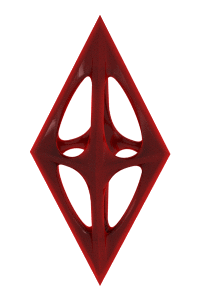NUi X-hale Bookshelf by NUi |
Home > Winners > #52094 |
 |
|
||||
| DESIGN DETAILS | |||||
| DESIGN NAME: NUi X-hale PRIMARY FUNCTION: Bookshelf INSPIRATION: The fact that woodwork is, to this day, bound by the same methods that have been used for centuries namely: traditional joinery, nails, screws and adhesives was a compelling rationale for innovation. Our objective was to expand the range and versatility of wood through a safe, functional and user-friendly interconnection system. This vision intends to make wood more accessible to a wider audience, by offering a more practical and interactive user experience. Through this natural user interaction wood can finally become a creative medium. One that can be easily configured and iterated through simple, structurally sound manual connections, which can be pressed into place without the need for tools. Environmental sustainability was also an important imperative that informed every facet of development. For our team, it was crucial to attain optimal wood use, through a substantive reduction in the volumes and dimensions required for woodworking, while achieving equal or superior structural profiles as compared to conventional connecting techniques. UNIQUE PROPERTIES / PROJECT DESCRIPTION: NUI is a nascent, wood-specific, modular assembly system, comprised of a growing number of polymer connectors designed to create diverse structural, dimensional & spatial configurations. The vision is that, in time, this expanding universe of interconnecting components, conceived to create, high-quality, solid wood products can be use to fashion any and every design configuration imaginable. For this bookshelf application, the connectors that are showcased, grant unparalleled integrity to load-bearing wood designs that otherwise, would not be feasible via traditional means. Moreover, the system allows for easy assembly and disassembly through, simple & safe, locking and unlocking mechanism. This enables reusability for seamless reconfigurations, allowing the user to make aesthetic and dimensional adjustments, to suit ever-changing design needs and preferences. OPERATION / FLOW / INTERACTION: The polymer connectors are permanently affixed to the wood elements thus making the assembly process very intuitive and simple. The primary advantage is that, by virtue of the interconnection system, the design can be completely disassembled and flat packed. In turn, each connection that links the underlying wood elements, can be swiftly locked and unlocked through a locking pin, offering a fail-safe integrity to every union. The X-Hale bookshelf showcased, has a weight bearing capacity of 180 kg tested. This is noteworthy, since the dimensional profile of every constitutive wood elements has been streamlined to a mere 25.4 mm by 25.4 mm. While the vertical sections have been skeletonized, pushing the bounds of the wood’s structural and load-bearing capacity. PROJECT DURATION AND LOCATION: Every phase of the design process, from conceptual design, structural analysis, prototyping, to final assembly was carried out at our facility, on the outskirts of Managua, Nicaragua. The project was launched on March 30th, 2016 and reached its last milestone on October 30th, 2016 with the completion of the third and last scheduled design iteration. FITS BEST INTO CATEGORY: Furniture Design |
PRODUCTION / REALIZATION TECHNOLOGY: The development process used our in-house 3D design, 3D printing and CNC capabilities which were crucial for concept validation, iterative prototyping and precision cutting. Exacting accuracy was vital from: 3D prints, intricate CNC cuts, to crafting demanding wood elements with challenging wood species. Our superb R&D team, comprised of engineers, architects and expert craftsmen were the true artists who made the technology work in concert, under demanding timelines, with great mastery of the process, to achieve and surpass our self-imposed metrics and expectations. SPECIFICATIONS / TECHNICAL PROPERTIES: Shelf Dimensions: 400 mm x 980 mm x 2,700 mm Cross Sections: 25.4 mm x 25.4 mm Wood Species: Ipe (Tabebuia chrysantha) TAGS: Bookshelf, modular interconnecting bookcase, load-bearing wooden structures, wood-specific interlocking assembly system, locking modular interconnecting system, modular woodworking, tool-less wood construction, DIY system for wood, room divider, minimalist design, hardwood bookshelf, flat pack design, modular versatility, tool-less assembly & disassembly RESEARCH ABSTRACT: Our idea is to improve the user-experience by ushering a seamless and straightforward hands-on approach. As a result, the user has a more rewarding and intuitive interaction with wood. In turn, this offers greater versatility to reconfigure pre-fab designs and even repurpose wood elements for future design applications. From a user-centric perspective, wood is perceived as an enhancement, infusing a natural warmth to our living environments. However, based on our observations, research and extensive user feedback, there seems to be a disconnect. It turns out that most wood products are sold as either; fully assembled, impractical, monolithic designs or they present significant assembly challenges. Over time, these drawbacks tend to undermine the life of the product due to growing structural deficiencies related to material degradation and tolerance loss. From a technical standpoint, wood is a dynamic and reactive medium that is in constant flux. These dimensional variances tend to undermine the all-important tolerances required for woodcraft, in general, and specifically for joinery. Consequently, in wood, accuracy is at best elusive, if not fleeting. Since, wood joints are accuracy dependent, as the wood moves the corresponding structural integrity is progressively compromised. So the continuous dimensional changes in wood, compounded by the often debilitating joining techniques, in use today, make it very difficult for repeated assembly and disassembly cycles to be sustainable for mass produced wood designs. By maximizing the structural performance of each connection the system confers lasting reliability and ease to the assembly and disassembly process. This level of dependability exacts a degree of accuracy that must comply with deviations of just; plus or minus 0.1 mm, for every connection. Thus accuracy, is just one of the many criteria which impart an unparalleled structural proficiency that can only be attained through this system. Ultimately, the flat packing possibilities that the system affords, translate into important cost savings due to reductions in shipping volumes. CHALLENGE: The challenge was to find solutions to the limitations inherent to wood, as a raw material, that relate to joinery. Arguably, wood is widely considered as the preeminent building material due to its endless applications and advantages. However, joining is certainly not one of them, since wood is prone to constant dimensional changes. Over time, these variations tend to undermine joints and ultimately, the structural integrity of a design assembly. Consequently, the challenge was to develop a wood-specific, interconnection system that resolve these shortcomings and thus: facilitate assembly, enable disassembly, offer locking and unlocking mechanisms for each connection, while improving its structural profile and performance. In time, the net effect should render screws, nails and adhesives redundant, while also minimizing wood requirements. ADDED DATE: 2016-12-11 02:47:15 TEAM MEMBERS (4) : Jamie Rosales, Raul Saborio, Amelia Tijerino and Guillermo Martinez IMAGE CREDITS: Otto Mejia Fotografía PATENTS/COPYRIGHTS: Patent Pending |
||||
| Visit the following page to learn more: http://www.nui.life | |||||
| AWARD DETAILS | |
 |
Nui X-Hale Bookshelf by Nui is Winner in Furniture Design Category, 2016 - 2017.· Read the interview with designer NUi for design NUi X-hale here.· Press Members: Login or Register to request an exclusive interview with NUi. · Click here to register inorder to view the profile and other works by NUi. |
| SOCIAL |
| + Add to Likes / Favorites | Send to My Email | Comment | Testimonials | View Press-Release | Press Kit |
Did you like Nui's Furniture Design?
You will most likely enjoy other award winning furniture design as well.
Click here to view more Award Winning Furniture Design.








